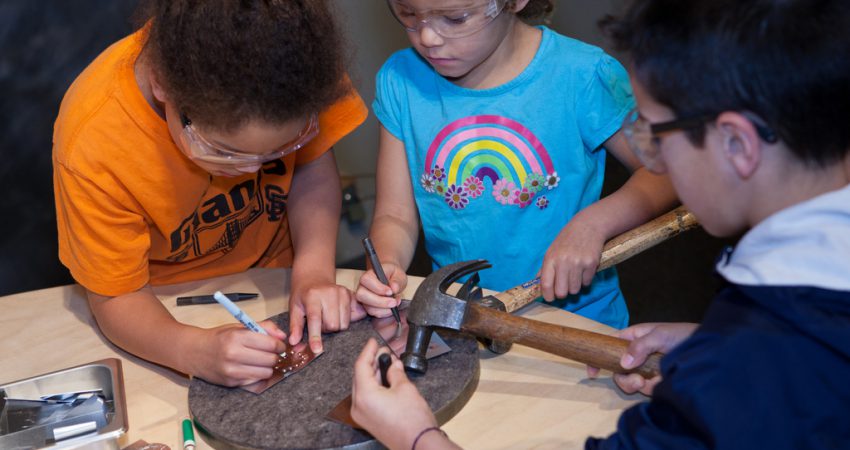
By Nicole Bulalacao - March 2015
PAPER CITATION
Jurow, A. S. (2005). Shifting engagements in figured worlds: Middle school mathematics students' participation in an architectural design project. Journal of the Learning Sciences, 14(1), 35–67. doi:10.1207/s15327809jls1401_3
In-class projects can be an effective way for students to learn subject material that relates to authentic problems people address outside of classrooms. Jurow investigated middle-schoolers’ participation in an in-school math project based on the premise of creating a research station in Antarctica. The author studied how students’ project engagement and meaning making with math content shifted as students navigated through the different and often competing figured worlds of the classroom and “Antarctica.”
Figured worlds are socially constructed spaces where participants draw from resources such as social and cultural cues to figure out their roles and responsibilities. For example, in a typical math classroom, a student may figure out that her main concern is to prove to the teacher that she has learned the concepts taught in class by earning high marks on tests and homework. In the Antarctica project, the main concern of this same student might be to use mathematics to design a station that could comfortably house people and withstand the harsh environment. This individual is thus thinking like an architect rather than like a student. The Middle School Mathematics Through Applications curriculum intentionally put these two figured worlds—the classroom and its imaginary Antarctica—together so that students could expand their views on how to use mathematics.
Research Design
Jurow developed a case study of a focal group of eighth graders to show how the students became engaged in the roles and responsibilities of an architect in the figured world of Antarctica. This case was a part of a larger ethnographic study on math and design activities across work and school settings.
As the research team (which included the classroom teacher) made design decisions, the practices of architects became more alluring and authentic for the students. Three phases helped scaffold students’ orientation to the Antarctica project:
- Pre-design: Students completed various worksheets and math exercises to explore such concepts as surface area, perimeter, and proportion, along with the real-world constraints of a research station.
- Research station design: Students designed a layout of their research station within the imposed constraints. They used computer software and mathematical concepts to inform their design.
- Cost analysis: Students presented and explained cost-analysis graphs to the class. They defended their designs and cost analyses before a team of professional architects.
Research Findings
At the beginning of the project, the students were oriented to the figured world of the classroom. As the Antarctica project progressed, students became more strongly oriented to their roles as architects in Antarctica and engaged with mathematical concepts in those roles. The student presentations in front of peers and professional architects served to merge the two figured worlds.
In the predesign phase, the figured world of Antarctica was introduced, but the figured world of the classroom dominated classroom interactions. For example, a student would ask a teacher about an answer the group had determined, and the teacher would verify its correctness. Students seemed to be most concerned about finishing the assignment correctly; the teacher was positioned as the authority.
In the design phase, tensions among students emerged as some students stayed oriented toward the classroom while others became more engaged with the figured world of Antarctica. For example, when one student reacted strongly to the excessive cost of equipment, another student dismissed the objection: “This isn’t real. We’re only doing it in class, so it doesn’t matter.”
In the final phase, when students presented their research stations to their peers and justified their designs to professional architects, orientation toward “Antarctica” became more apparent. The presentations helped students explain their designs and allowed for on-the-spot critiques from professional architects (e.g., why do you have two labs? Why is a penthouse needed?) who likely solve these same problems themselves. The students had to use concepts learned in class, such as perimeter and area, to justify and revise their layouts. The presentations thus effectively merged the figured worlds of the classroom and Antarctica.
Theoretical Basis
Jurow draws on social practice theories of identity and learning, which focus on how identity is formed with and through social, cultural, and historical activity. She builds upon Holland, Lachiotte, Skinner, and Cain’s (1998) concept of figured worlds, which are socially and culturally constructed realms of interpretation in which people learn how to make meaning and relate to one another across different contexts of time and place (p. 52). In figured worlds, students can take on roles and responsibilities, such as those of an architect, that may not be available to them in other realms, such as their classrooms and homes (Urrieta, 2007).
Implications for Practice
Project-based learning enables learners to apply academic content to realistic contexts outside of the learning environment. The challenges and new roles brought on by projects may allow more opportunities for students to adopt different roles in the classroom. Jurow’s study can help OST educators enhance connections to figured worlds outside of their program by creating opportunities for students to share their work and receive feedback from peers and from experts in the community. Bringing in STEM professionals to give feedback on a project may allow students to see how people outside of the classroom apply the content they are learning to real-world problems.
References
Holland, D., Lachicotte, W., Jr., Skinner, D., & Cain, C. (1998). Identity and agency in cultural worlds. Cambridge, MA: Harvard University Press.
Urietta, L. (2007). Figured worlds and education. Urban Review, 39(2), 107–116. doi: 10.1007/s11256-007-0051-0




